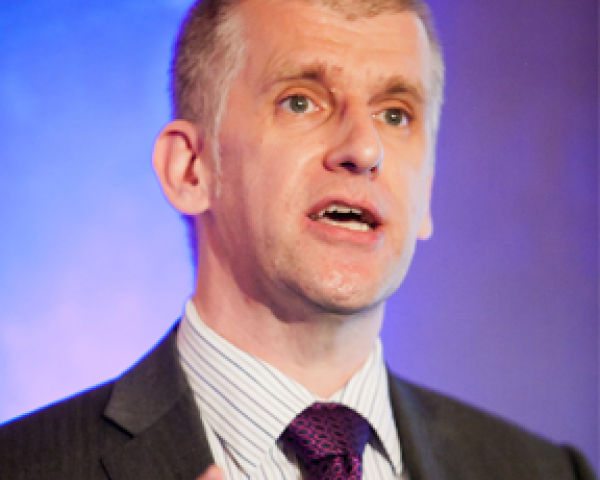- Marco Brandt (Agila) shared about Agila's journey from being a broker-based pet insurer to focusing on the Internet channel. It uses digital capabilities for personalization of communication and pricing. Perhaps the biggest opportunity for the company, though, was to use its digital communication and free content to dramatically increase the number of touch-points with their customers (a recurring theme). Agila has a strong story to tell about growth of customer satisfaction and premium income (which doubled in five years). The company's next, self-identified challenge is to embrace mobile.
- Stephan Dequaire (Towergate) provided a review of the growth of price comparison sites in the UK car insurance industry. I was surprised at how much Compare the Market now dominates, above even MSM and Go Compare. It was also interesting to see how much this model varies across the world. By comparison with the U.S., intermediaries (including tied agents) are more the norm across Europe, where there is also a larger share for bancassurers. Some research suggests the shine is coming off them, though, with even consumer advice sites pointing to direct insurers. What was more shocking was to hear how a consumer advice site suggests consumers lie about data to get a better price ("optimizing your job title," etc). It really brought home the erosion of consumer trust, in the UK market especially.
- Phil Bayles (Aviva) reminded us that, across Aviva and insurance as a whole, the intermediary channel still provides the largest profit and volume. He provided a nice segue into my later talk because he stressed how more than 25% of management time was now taken up by conduct risk agenda. The challenge with succeeding with your intermediary channel, including independent financial advisers (IFAs), is that they deal with you day in and day out. You can't persuade an intermediary channel with some catchy or emotive brand advertising. Bayles stressed the need for a focus on adviser satisfaction and ease as well as fixing problems quickly. With a strategy to be "No. 1 for Brokers," there is nowhere for Aviva to hide if tracking does not match up. Transactional net promoter scores (TNPS) suggest that Aviva is well on its way.
- Simon Green (The FCA) talked about how FCA's behavioral economics expertise was influencing policy and reviews, as well as the important role of technology innovation.
- Pollyanna Deane (Simmons & Simmons) brought legal expertise to our proceedings and talked about increasing regulatory scrutiny, including the likely impact of the Insurance Distribution Directive. She also mentioned the risk of European Insurance & Occupational Pensions Authority (EIOPA) becoming a third regulator for UK insurers!
- I then presented on customer insight and conduct risk, where I shared a number of the lessons I've learned from training insurance marketing teams on using customer insight to mitigate conduct risk. This included briefly covering consumer spotlight, behavioral economics and vulnerable customers. I'm pleased to say there was considerable interest afterward as marketing leaders could see the benefits of more focus on conduct and on embedding insight in their processes.
- Louis de Broglie (InsPeer) focused on innovation. He explained the interesting concept on which his start-up, InsPeer, is based. Returning to the insurance origin of mutuality and governance in community, his company provides consumers with a way to pool their excesses. Currently, only available in France, this unregulated solution combines the purchase of high-excess cover from an insurer with a community that contracts to cover a proportion of others' excess in the event of a claim. This results in lower premium and zero excess for each individual, as well as social pressure on claim veracity and lower claims frequency for the insurer. The next stage is intended to be peer-to-peer insurance, akin to the evolving models from Guevara in the UK, as well as others worldwide. Given the explosive growth of Uber and AirBnb, it seems likely some model of peer-to-peer disruption will take off.
- Monika Schulze (Zurich) returned to the theme of greater engagement through marketing. Her recurrent theme was the importance of emotion, using your brand and an emotionally engaging narrative consistently across channels to provoke positive responses and engagement from consumers. Inspired by "Transmedia Branding," Schulze really brought this topic to life through a number of videos that made an impact and examples of clever use of social media. Perhaps the most surprising part of this event was a story about Lidl selling milk in Sweden. Through active monitoring of Facebook comments, Lidl spotted a Swede named Bosse who said he didn't want to buy German milk. Lidl used this as a chance to humanize its brand, and the company renamed its milk "Bosse's Milk" across Sweden, including a photo of Bosse and an explanation that the milk actually is Swedish milk. This action, in response to an individual, captured the public imagination and boosted sales. For a great example of fleet-of-foot and creative marketers using emotional advertising, check out Zurich's #SaveThe Snowmen.
- Gordon Rutherford (Axa) also stressed the importance of emotional communication in brand engagement. Along with warning to not be one of those needy brands that basically use social media to say "please love me," he highlighted the impact of finding a noble cause to really make a difference and to improve brand sentiment. An example is Axa's "glass of consciousness" exhibitions in Mexico, which engage the public with the need to change attitudes about drinking and driving. Axa has found a way to humanize its brand and engage its own employees, all the while making a social difference.
- Edward Rice (AIG) shared AIG'S progress in digital transformation, where the company has gone beyond just using digital as a marketing channel and is using it to reengineer business and customer experience. He noted that the right comparison for customer experience isn't the low bar currently set by the insurance industry but is, rather, the personalized, digital ease provided by retailers. He then shared numerous examples of how, once you have the basics delivered consistently, you can surprise and delight your customers with personalization and relevance. One interesting example was marketing done by Boden and easyJet that shows customers that the brands remember past purchases and have an apparent growing understanding. Rice also touched on the power of responding to one individual on social media as a way to humanize your brand and be playful and on the importance of providing timely advice and warnings that help customers reduce risks.
- Isabelle Conner (Generali) explained the huge cultural transformation that she is leading, changing a 184-year-old business from product-centric to customer-centric. She stressed the importance of emotional brand marketing and reminded everyone that we are in an ideal position to put this into action, with insurance being about protecting what people love and being there when the traumatic happens. But the marketing has to be grounded in changing the customer experience reality and the internal brand reality, not just be about broadcasting a message. Perhaps the part that had the most impact was when she shared videos of Generali's CEOs from Spain, Switzerland and France calling customers who left detractor net promoter score (NPS) ratings. It is so important to include timely response and resolution in your NPS metric programs, but it has even more of an impact on a company's culture when CEOs get engaged in the experience.
- Stephen Ingledew (Standard Life), although not an insurer, has many of the same challenges in the world of retirement savings, investment and income solutions. Ingledew focused on the importance of customer engagement in redesigning improved experiences. He shared some details of co-creation sessions and agile development, the latter being more than just an approach to IT development but also a mindset of continual learning and iteration. Some of his examples of online tools included elements of "gamification," which is helpful for consumers in the baffling world of pension reform choices. The brand approach of "#ReadyWhenUAre" nicely balances a range of enablers, while avoiding being paternalistic. Another critical customer need is education, but it becomes tricky to do it in a way that is neither boring nor patronizing. Selecting Steph and Dom from the British reality show Gogglebox to host a series of videos to chat in the pub about the issues was inspired choice, and one can see why it has gone viral.
- Zach Goren (Media Alpha) brought the world of West Coast U.S. innovation to the conference. Media Alpha is helping auto insurers, among others, buy targeted "in market" customer leads in real time, rather than just relying on mass market advertising through Google (where insurance keywords cost a fortune). Media Alpha is basically an innovation on the traditional market of selling unconverted quotes, but the company does this in real time and stays on the insurer's site. So, the insurer becomes both a seller of insurance as well as a seller of advertising space to competitors, especially where customer details show this person is unlikely to convert. Media Alpha provides real opportunities to offer consumers more choice.
- James Baker (Vitality) leads the insight team and helps the company's brand understand how to bring about behavioral change in its customers. The company has an interesting approach, providing health insurance but also helping motivate you to not need it, through rewards for a healthier lifestyle. This approach provides more opportunity for engagement with insurance customers and offers tangible value back on your policy (many insurers would love to achieve either). Vitality's insight, built on a hybrid segmentation of FSS and behavioral analytics, has identified a number of actions and rewards, under the concepts of "we'll be there for you" and "we'll make it more rewarding to be well in the first place," that have driven significant engagement and behavior change. Ideally placed to exploit wearables and other IoT innovation, given the importance of employers and employee benefit consultants to Vitality's business, the company can also demonstrate benefits in reduced absenteeism.
- David Stevens (LV=) brought to life the complex world of automated advice in the pensions/retirement income sector. The company has innovated with so called robo-advice (although the process also includes human interaction). LV='s innovation with Wealth Wizards (which it acquired) and the fact it has broken down the steps into manageable chunks should really help. With the high cost of advice, too many in the public are not engaging with such an intangible service. A fixed price of £199 for personalized options after automated fact finding is much more accessible, and the offer is communicated in an emotionally warm way. Once again, you can see the influences of both personalization and gamification in the company's communication. The style of communication and the ease of playing with the tools also contribute to humanizing insurance (as does clear fixed pricing).
- Adam Kornick (Aviva) heads up the company's global analytics capability, and he shared how it is using predictive analytics in pricing and risk modeling. Kornick gave an important reminder that price is the primary selection criteria consumers cite with insurance, so personalized pricing matters every bit as much as, if not more than, personalized communication. One of Aviva's key innovations has been to build on the individual price for quoting (based on captured and average data) that others have done for home insurance and to give customers the price of a product that they are most likely to buy next. It was also interesting to hear of Aviva's progress in broker analytics, another reminder as to the importance of the intermediary channel and how predictive analytics can help there, too.
What Are Other Marketers Doing?
Marketing leaders share insights on the need for personalization, emotions, the humanizing of insurance -- and more.








